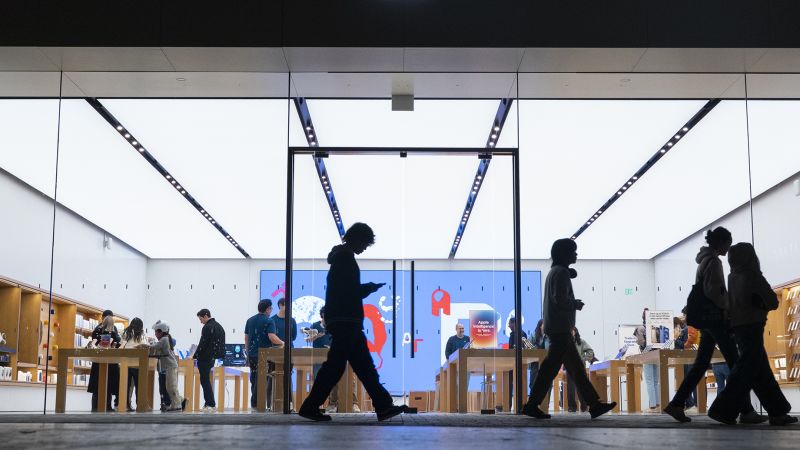Apple Inc., the technology giant known for its innovative products, is gearing up for a transformative period in its iPhone offerings. The company, which derives a significant portion of its revenue from smartphone sales, may soon unveil a new addition to its flagship lineup. Industry reports suggest that Apple is preparing to introduce a much slimmer iPhone, likely referred to as the iPhone “Slim” or “Air,” later this year as part of its iPhone 17 series. This anticipated change marks one of the most significant design overhauls since the launch of the bezel-less iPhone X in 2017.
As Apple rolls out this new design, a crucial question arises: will it be enough to stimulate consumer interest and sales? While Apple’s iPhone business remains relatively stable—with smartphone revenue holding steady and overall company revenue growing by 4% in the first fiscal quarter—challenges loom large. Notably, consumers are holding onto their devices for a longer period than before, and recent quarterly results revealed that iPhone revenue fell short of Wall Street’s expectations. Moreover, rising competition, especially in the Chinese smartphone market from local companies, has added pressure on Apple to revamp its key product line.
The tech landscape poses unique challenges to Apple. As emerging competitors continue to capture market share, it’s vital for Apple to innovate and evolve its flagship product. There is an ongoing perception that iPhones may lack appealing upgrades that entice users to change their devices frequently. While Apple has invested heavily in artificial intelligence technologies—including enhancements to its Siri voice assistant—these features have yet to deliver significant, innovative breakthroughs for consumers. As many users outlast their devices into longer replacement cycles, Apple faces mounting pressure to make substantial changes to encourage upgrades.
The expected slimmer iPhone 17 could be a critical factor in the company’s strategy to regain market momentum. Reports indicate that this new model will be approximately two millimeters thinner than the existing iPhones and will likely replace the larger iPhone Plus model in Apple’s current lineup. Apart from its sleeker design, the phone will still embody recognizable features, such as the Dynamic Island cutout and a dedicated camera button. The thinner design is especially appealing to consumers in markets like China, where aesthetic appeal is often prioritized.
China is a significant market for Apple, and recent trends have shown a decline in revenue from the region, dropping from $21 billion to $18.5 billion. The competition from domestic brands, such as Xiaomi and Oppo, which have recently introduced their own sleeker devices, highlights the importance of keeping up with design trends. Industry experts, including Nabila Popal from the International Data Corporation, emphasize the need for Apple to incorporate cutting-edge hardware innovations to recapture popularity among Chinese consumers.
Despite the initial excitement around design changes, analysts voice concerns that a flashy new product may not be enough to drive sales. Apple must create compelling reasons for consumers to upgrade, especially considering that smartphone technology has plateaued, and users often keep their phones for extended periods. Reports from UBS indicate that the average iPhone user retains their model for around 37 months, which is slightly higher than in previous years.
While improvements in Apple Intelligence—Apple’s softwarе platform that includes AI capabilities—may ultimately attract consumers, current functionalities have not yet reached an upgrade-worthy threshold. For example, the revamped Siri will need to be more intuitive and capable of taking actions within apps to enhance user experience—functionality expected to roll out in the coming year during Apple’s Worldwide Developers Conference.
As the industry watches, Apple’s decisions will be crucial. The forthcoming announcements concerning AI functionalities and hardware innovations could play a significant role in determining whether users will deem the new devices worthwhile enough to spend on an upgrade. Analysts, such as David Vogt from UBS, underscore this sentiment, stating that many existing users find no compelling economic reason to switch devices at this point. Hence, Apple’s ability to innovate, whether through smarter software or a more enticing design, will likely define its success in re-establishing its dominance in the smartphone market.










